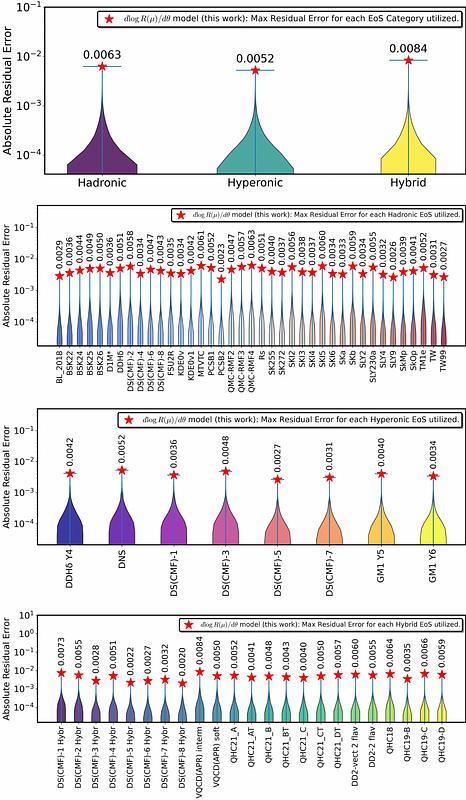Universal description of the Neutron Star's surface and its key global properties: A Machine Learning Approach for nonrotating and rapidly rotating stellar models

Universal description of the Neutron Star's surface and its key global properties: A Machine Learning Approach for nonrotating and rapidly rotating stellar models
Grigorios Papigkiotis, Georgios Vardakas, Aristidis Likas, Nikolaos Stergioulas
AbstractNeutron stars provide an ideal theoretical framework for exploring fundamental physics when nuclear matter surpasses densities encountered within atomic nuclei. Despite their paramount importance, uncertainties in the equation of state (EoS) have shrouded their internal structure. For rotating neutron stars, the shape of their surface is contingent upon the EoS and the rotational dynamics. This work proposes new universal relations regarding the star's surface, employing machine-learning techniques for regression. More specifically, we developed highly accurate universal relations for a neutron star's eccentricity, the star's ratio of the polar to the equatorial radius, and the effective gravitational acceleration at both the pole and the equator. Furthermore, we propose an accurate theoretical formula for $(d\log R(\mu)/d\theta)_{\max}$. This research addresses key astronomical aspects by utilizing these global parameters as features for the training phase of a neural network. Along the way, we introduce new effective parameterizations for each star's global surface characteristics. Our regression methodology enables accurate estimations of the star's surface $R(\mu)$, its corresponding logarithmic derivative $d\log R(\mu)/d\theta$, and its effective acceleration due to gravity $g(\mu)$ with accuracy better than $1 \%$. The analysis is performed for an extended sample of rotating configurations constructed using a large ensemble of 70 tabulated hadronic, hyperonic, and hybrid EoS models that obey the current multimessenger constraints and cover a wide range of stiffnesses. Above all, the suggested relations could provide an accurate framework for the star's surface estimation using data acquired from the NICER X-ray telescope or future missions, and constrain the EoS of nuclear matter when measurements of the relevant observables become available.